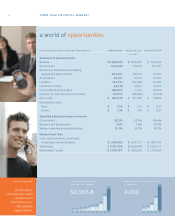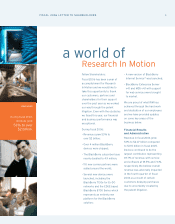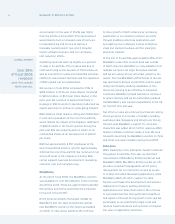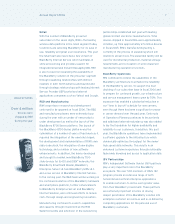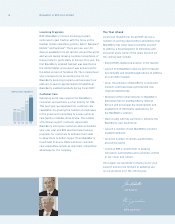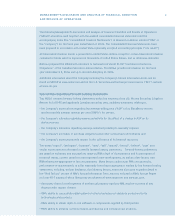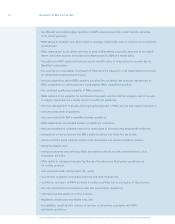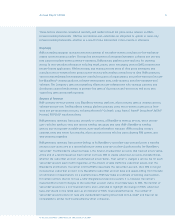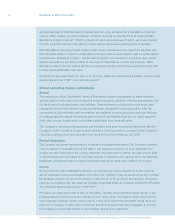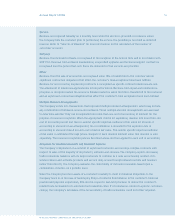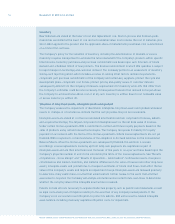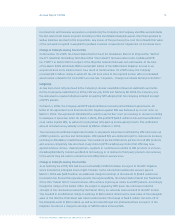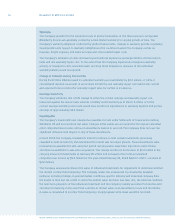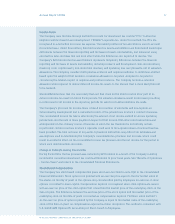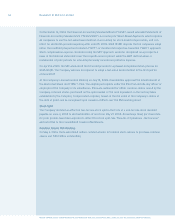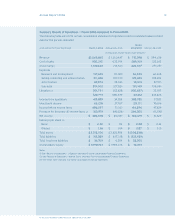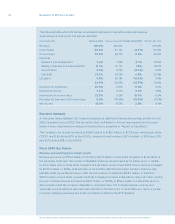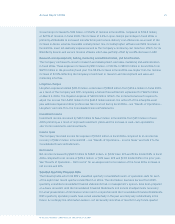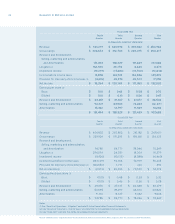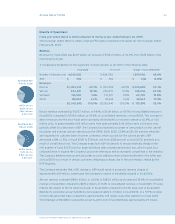Blackberry 2006 Annual Report Download - page 15
Download and view the complete annual report
Please find page 15 of the 2006 Blackberry annual report below. You can navigate through the pages in the report by either clicking on the pages listed below, or by using the keyword search tool below to find specific information within the annual report.
Research In Motion Limited • Incorporated Under the Laws of Ontario (In thousands of United States dollars, except per share data, and except as otherwise indicated)
Annual Report 2006 13
For the years ended March 4, 2006, February 26, 2005 and February 28, 2004
Revenue is recognized rateably on a monthly basis when the service is provided. In instances where
the Company bills the customer prior to performing the service, the prebilling is recorded as deferred
revenue. Refer to “Sources of Revenue” for more information on the calculation of the number of
subscriber accounts.
Revenue from licensed software is recognized at the inception of the license term and in accordance with
SOP 97-2. Revenue from software maintenance, unspecied upgrades and technical support contracts is
recognized over the period that such items are delivered or that services are provided.
Revenue from the sale of accessories is recognized when title is transferred to the customer and all
signicant contractual obligations that affect the customer’s nal acceptance have been fullled.
Revenue for non-recurring engineering contracts is recognized as specic contract milestones are met.
The attainment of milestones approximates actual performance. Revenue from repair and maintenance
programs is recognized when the service is delivered which is when the title is transferred to the customer
and all signicant contractual obligations that affect the customer’s nal acceptance have been fullled.
The Company enters into transactions that represent multiple-element arrangements, which may include
any combination of hardware, service and software. These multiple-element arrangements are assessed
to determine whether they can be separated into more than one unit of accounting or element for the
purpose of revenue recognition. When the appropriate criteria for separating revenue into more than one
unit of accounting is met and there is vendor specic objective evidence of fair value for all units of
accounting or elements in an arrangement, the consideration is allocated to the separate units of
accounting or elements based on each unit’s relative fair value. This vendor specic objective evidence
of fair value is established through prices charged for each revenue element when that element is sold
separately. The revenue recognition policies described above are then applied to each unit of accounting.
The Company is dependent on a number of signicant customers and on large complex contracts with
respect to sales of the majority of its products, software and services. The Company expects increasing
trade receivables balances with its large customers to continue as it sells an increasing number of its
wireless device and software products and service relay access through network carriers and resellers
rather than directly. The Company evaluates the collectibility of its trade receivables based upon a
combination of factors on a periodic basis.
When the Company becomes aware of a customer’s inability to meet its nancial obligations to the
Company (such as in the case of bankruptcy lings or material deterioration in the customer’s nancial
position and payment experience), RIM records a specic bad debt provision to reduce the customer’s
related trade receivable to its estimated net realizable value. If circumstances related to specic customers
change, the Company’s estimates of the recoverability of trade receivables could be further adjusted.



